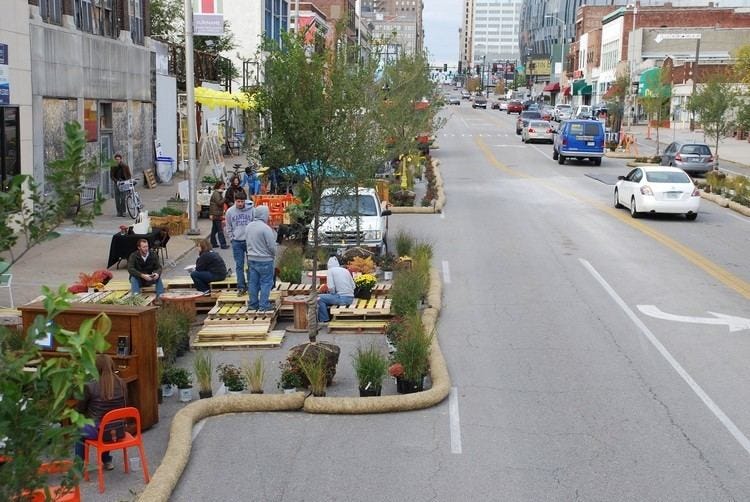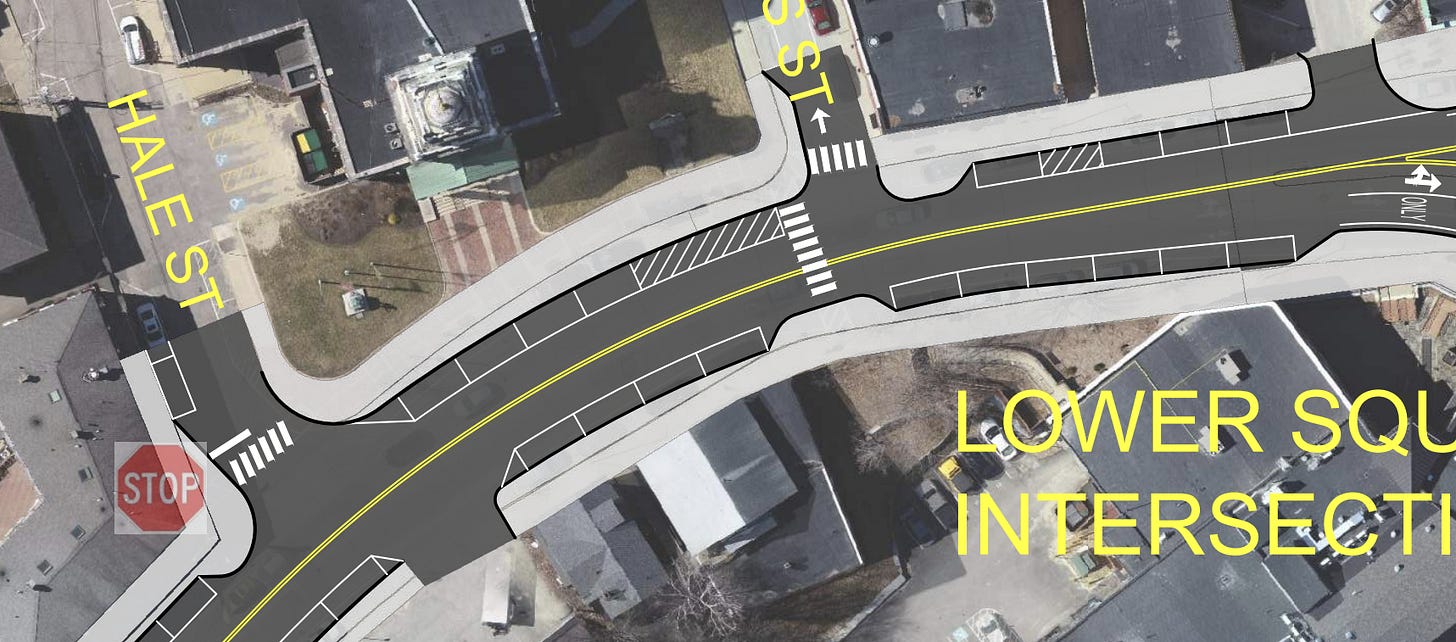Meeting #6 - Reviewing The City of Dover's Plans for Downtown
Dover started looking at this effort in 2013, why does change take so long?
Hello, thank you for checking out the Strong Towns Seacoast Newsletter. I hope everyone had a wonderful Valentine’s Day. If I’m being honest, it kind of snuck up on me and I found myself on the 14th sprinting through downtown Portsmouth to reach a shop before they closed for the day. I managed to make it there on time so it all worked out and we did had a good evening together. I absolutely do want to highlight that my wife killed it with her gifts for me (a board game, a David Bowie puzzle, a pillow that looks like one of our cats, and a keychain with a handwritten message engraved on it).
We held our 6th in-person meeting this past Saturday and our topic was a review of the proposed Downtown Pedestrian and Vehicular Access Improvements Project by The City of Dover. We had a printout of the presentation slides and of the graphics that were available for public comment last year when it was presented and went through the proposed changes to discuss them at the meeting.
Making Room for “Little Bets”
According to the city’s website, this project was started back in 2013 when the city paid for a study of traffic patterns in downtown Dover. At the time of this writing that is over a decade of analyzing and planning with no actual changes yet made to the downtown. How many more years will pass by before any of this actually materializes?
Our goal in reviewing this was to find areas where we think the city can make low cost investments to implement some of these changes sooner rather than later. After all why do we need to approve and budget the entire project before we can make a positive change today? This seemingly all-or-nothing approach is what Strong Towns refers to as a “big bet”, a risky, large, transformative investment that tries to analyze the many nuances of Dover’s downtown and commit to a solution before taking any action at all.
At our second in-person meeting we discussed The Strong Towns Approach and the first step that is given is to make “little bets” that are low-cost and low-risk to implement and can be temporary. The benefit here is that the city can make a small investment and quickly see the results of it play out. This means that we as a community can experience the design, feel it, and actually understand it before we fully adopt it as a part of our built environment. This strategy is called “Tactical Urbanism”.
Try It Before You Buy It with Tactical Urbanism
When you are shopping for an outfit, you go to the dressing room and try it on to see how it looks. When you are shopping for a car, you take it for a test drive to see how it feels. Grocery stores and food vendors occasionally hand out free samples to let you taste what they are offering. In so many areas we have an expectation that we can try something first before we commit to purchasing it. Heck, even after you purchase something you usually have the option of returning it afterwards. Can we do that with our city’s design?
Yes, we can do something like that. By using inexpensive materials, we can lay out new designs to try them out, test drive them, and see how they feel. Wooden pallets, paint, some planter boxes, and even a bail of hay can become a new layout for a space in your city. Does the new layout work? What would you change about it? Reconfigure those same materials and iterate on the design. Make experimentation a part of the process.

Focus Areas for Downtown Dover
Now, with that concept in mind, let’s dive into the things that we identified in our meeting that we think are areas we can make low-cost, temporary changes to the downtown to try out the proposed designs.
Widened Sidewalks
Throughout the proposed plan there are areas where the sidewalks are widened to create comfortable walking spaces around town. The city could try this change out independently of the other changes to see which width feels the best for our streets.
Narrowed Crosswalks
Another prevalent proposal was narrowed crosswalks that reduce the distance a pedestrian needs travel and be exposed to oncoming vehicle traffic. Let’s go ahead and try it to see how well it works!
A Car-Free Street
While this change was not part of the city’s proposal, we felt like it was in line with the spirit of the project’s goal of creating a walkable downtown. It was brought up by one of the meeting attendees who described their experience living in a city that would close off a specific street to vehicle access once a month. Is there support for something like that in our community? Imagine if one day a month Third Street or some other suitable location was transformed into a plaza for people to gather and spend time? It could be a new kind of third place that pops up on a schedule and helps build community. Do we really need vehicle access to every single street in the city at all times?
Wrapping Up
Thank you for reading and following us! I hope these last few posts have got you thinking about what kinds of changes that you would like to see in your community. Be on the lookout for details on our next in-person meeting in our upcoming post in a few weeks. If you are feeling inspired to advocate for change we would love to see you at our meeting in March, so come and join us.







